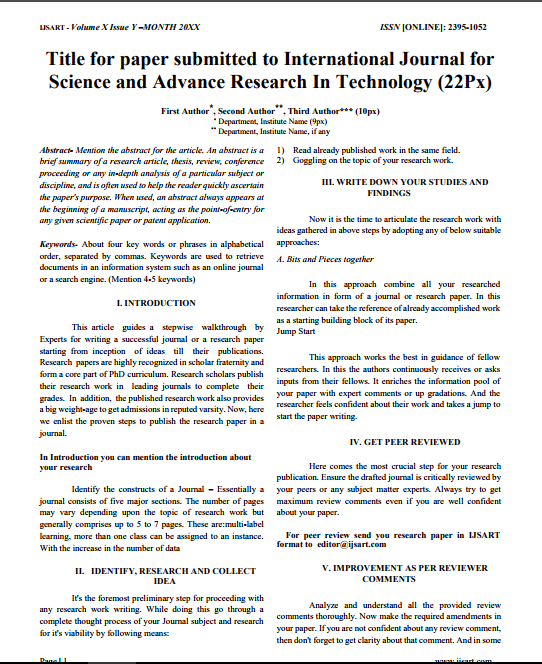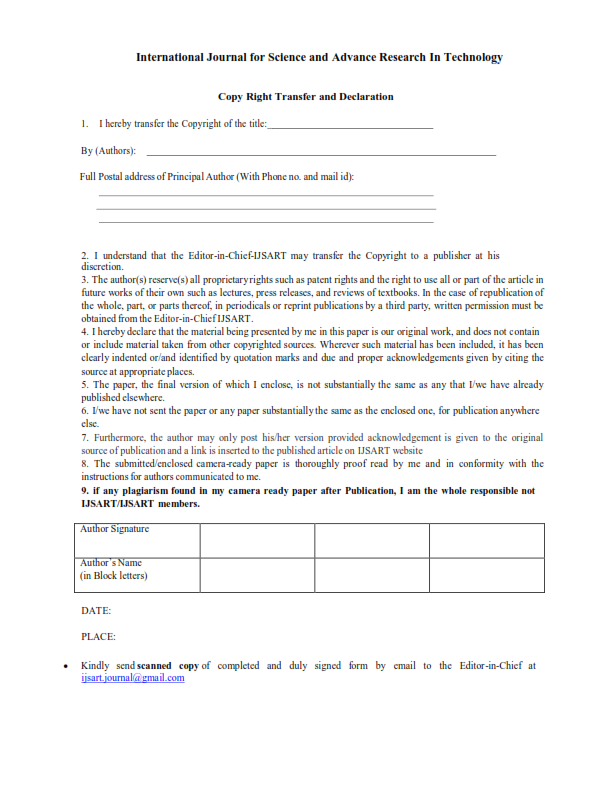Impact Factor
7.883
Call For Paper
Volume: 11 Issue 05 May 2025
LICENSE
Multiple Motor Fault Monitoring Information Using Wsn To Increase Production
-
Author(s):
Dr.S.Maniraj | Boopathi P | Naveenkumar K | Bharani K
-
Keywords:
Wireless Sensor Networks (WSN),Motor Fault DetectionReal-Time Monitoring, PredictiveMaintenance, Vibration Analysis
-
Abstract:
Fault Identification In Three-phase Induction Motors Is A Critical Aspect Of Industrial Operations, Aimed At Preventing Costly Downtimes And Ensuring Operational Safety. Induction Motors Play A Vital Role In Various Industrial Applications, Making Their Reliability And Efficiency Paramount. Faults Such As Unbalance, Insulation Failure, And Bearing Wear Can Lead To Significant Disruptions, Increased Maintenance Costs, And Safety Hazards If Not Identified And Addressed Promptly. This Paper Presents An Innovative And Efficient System For Fault Detection Andcontinuous Monitoring Of Three-phase Induction Motors, Utilizing A Wireless Sensor Network (WSN).The Proposed System Employs Advanced Wireless Sensors To Monitor Key Parameters That Are Indicative Of Motor Health, Such As Temperature, Vibration, And Current Signatures. These Parameters Are Critical As They Provide Early Warning Signs Of Potential Faults. For Instance, Abnormal Temperature Readings May Indicate Insulation Failure, Unusual Vibration Patterns Could Suggest Bearing Issues, And Irregular Current Signatures Might Point To Unbalance. Data Collected From The Wireless Sensors Is Transmitted Seamlessly To A Central Processing Unit (CPU) For Analysis. The Use Of Wireless Technology Eliminates The Need For Cumbersome Wired Connections, Simplifying The Installation And Maintenance Process. Moreover, The Wireless Setup Allows For Remote Monitoring, Providing Operators With Easy Access To Motor Health Information Regardless Of Their Location. This Capability Is Particularly Beneficial In Industries Where Motors Are Deployed In Hard-to-reach Or Hazardous Environments. The Central Processing Unit Leverages Machine Learning Algorithms To Analyze The Real- Time Data Collected By The Sensors. These Algorithms Are Trained To Detect Patterns Associated With Various Types Of Motor Faults. They Not Only Identify Anomalies In The Data But Also Classify The Specific Fault Type With High Accuracy.
Other Details
-
Paper id:
IJSARTV11I4103336
-
Published in:
Volume: 11 Issue: 4 April 2025
-
Publication Date:
2025-04-26
Download Article


